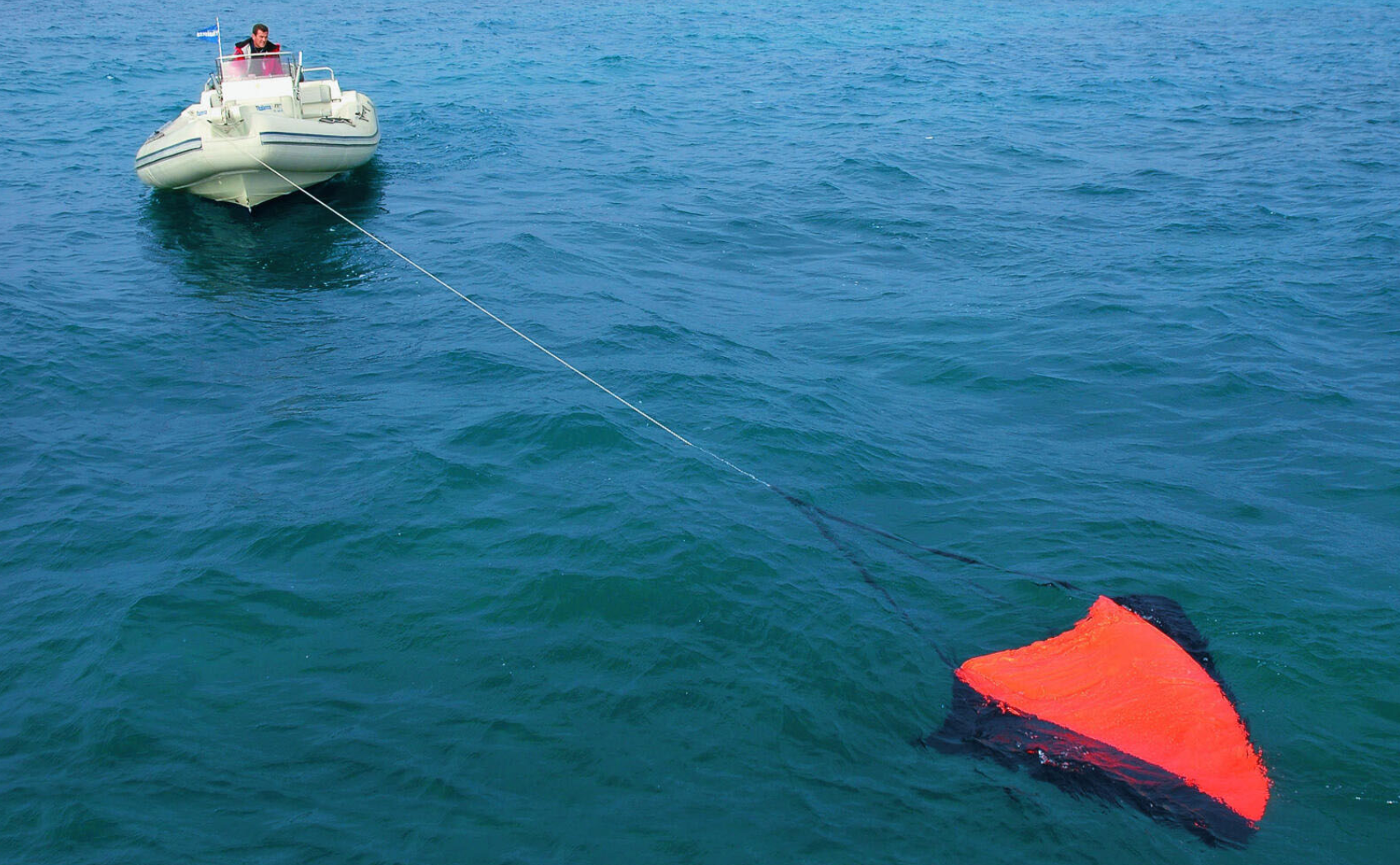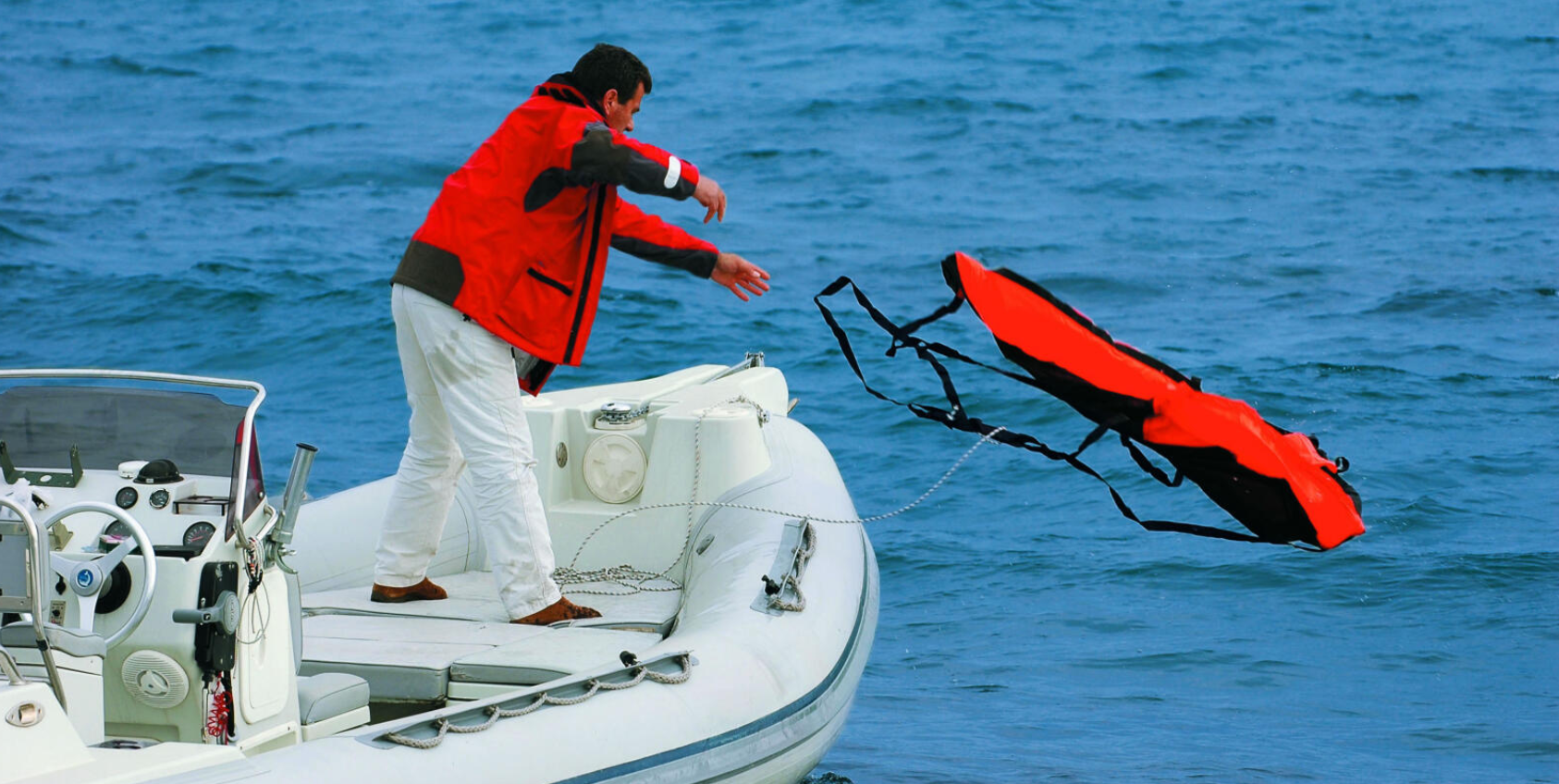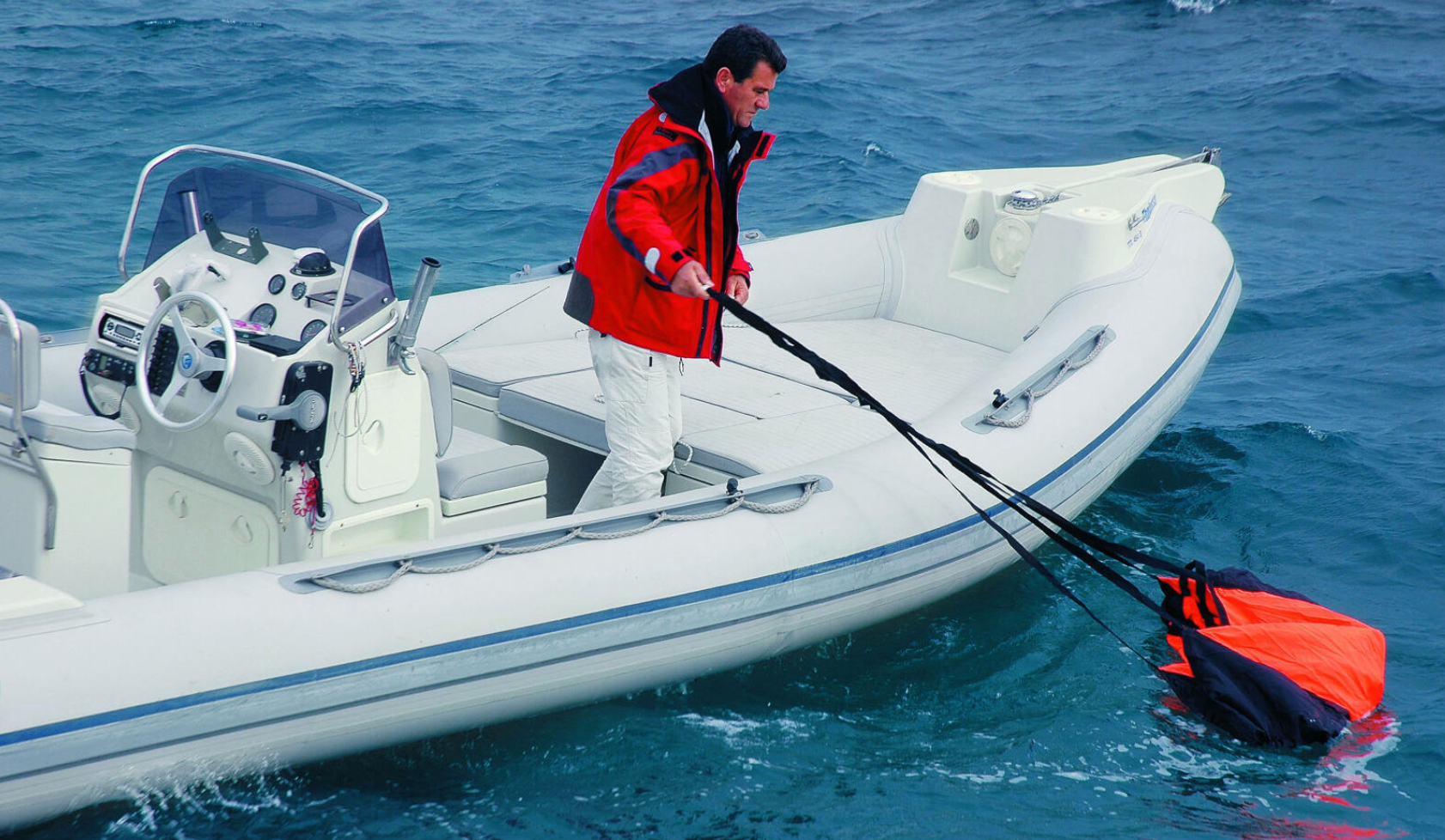How to Use a Floating Anchor: It May Save a Life

By Thomas P. — e-Ribbing.com
In cases when our rigid hull inflatable boat (RIB) is still due to a breakdown, it turns with its starboard or port towards the weather and is carried away faster from the sea because its biggest surface — the inflatable tubes — is exposed to the blowing wind and waves. One of the best ways to deal with this situation is to deploy a floating anchor.
Why a Floating Anchor?
- To hold the bow of the boat towards the weather, which will deter the undesirable constant transverse inclination and the unobstructed entry of water on the deck when the waves break over the tubes, especially in bad weather.
- To prevent the boat from being carried away without any resistance by the waves. The floating anchor works as a "brake" and minimizes the movement of the boat, keeping us close to our mark. Also, while in parallel it protects us from a potentially dangerous approach to the rocks when we are close to shore.
Its Function
So as not to waste any time, which can sometimes be lifesaving, we should have a long, thick rope permanently tied to the floating anchor. It can be immediately thrown to the sea and the free end of the rope is tied to a bow cleat.

As soon as the rope is stretched, the floating anchor begins to function, restricting the movement of the boat to the minimum. The cone shape of the floating anchor lets it fill quickly with water which, due to the gradual restriction of its incision, delays its flow in it. The “enclosed” bulk of water, finding a way out from the smallest opening of the floating anchor, keeps it permanently open and consequently in constant function. The bigger the floating anchor, the more the bulk of water enclosed in it having can hold the boat in place.
When Fishing
Apart from the aforementioned cases of sailing adrift, the floating anchor can be a useful tool for fishing. Anglers are aware that in some techniques, the most common one being bottom fishing for red snapper, it is sometimes preferable to fish when the boat is slowly carried by the weather to fish larger areas of the sea bed or to help locate the fish.

Choosing sizes
The size and weight of the boat are the two basic factors that lead us to the right choice of floating-anchor size.
- The small one with a maximum diameter of 26” (65 cm) for boats up to 16’ (5 m) long.
- The medium one has a maximum diameter of about 31.5” (80 cm) for boats up to 23’ (7 m) long.
- The large one with a maximum diameter reaching 4’11” (1.5 m) for boats up to 33’ 10 m) long.
In any case, the biggest floating anchor is preferred even because it encloses a bigger quantity of water and provides the most possible resistance.